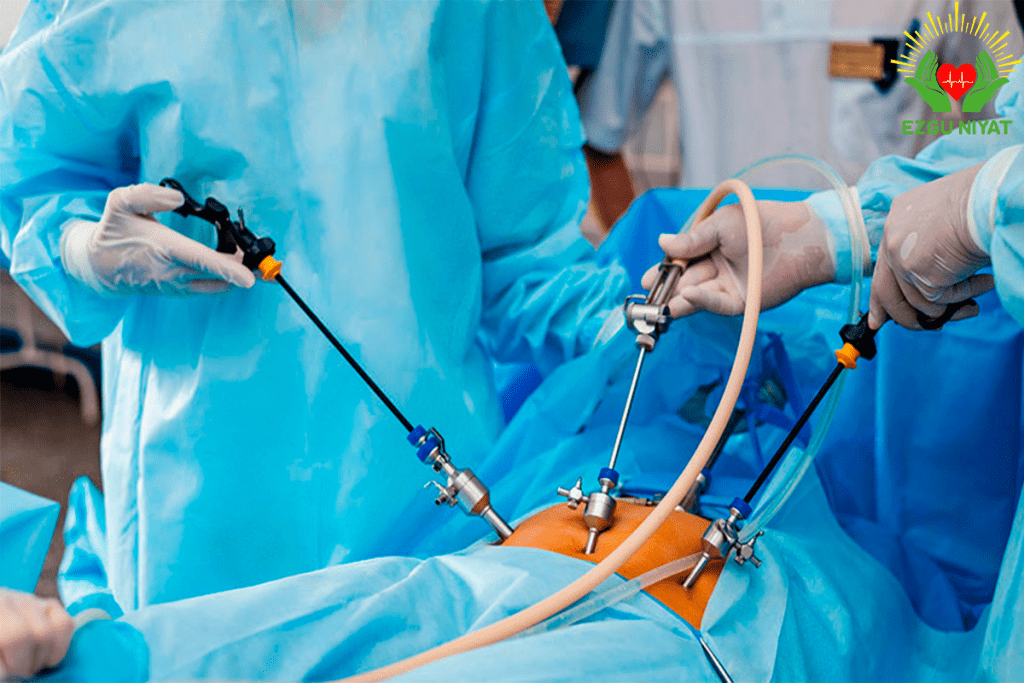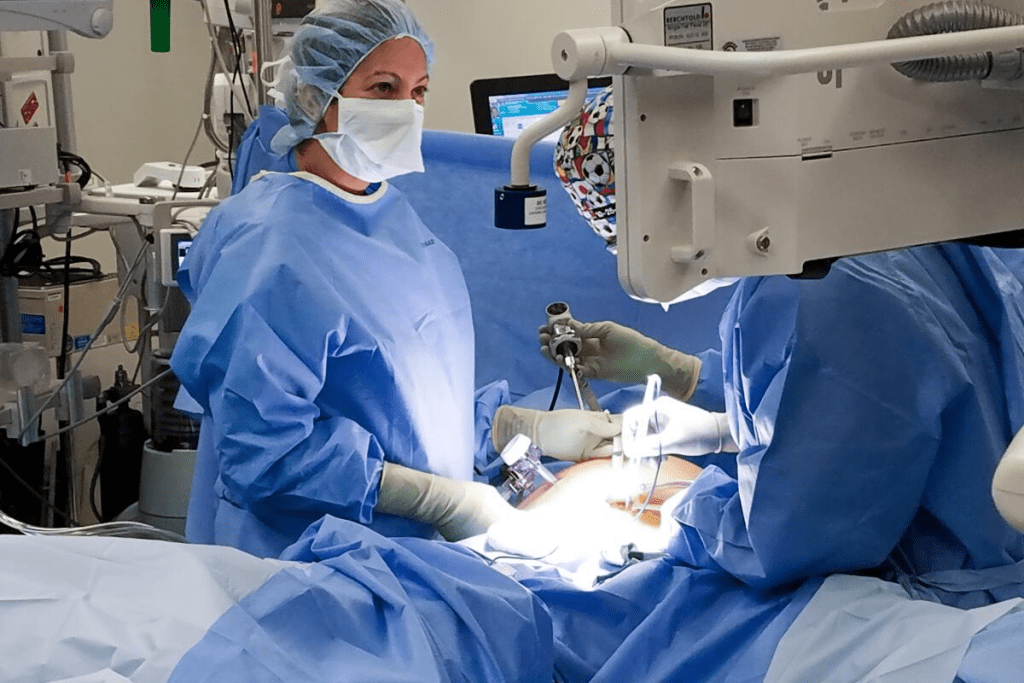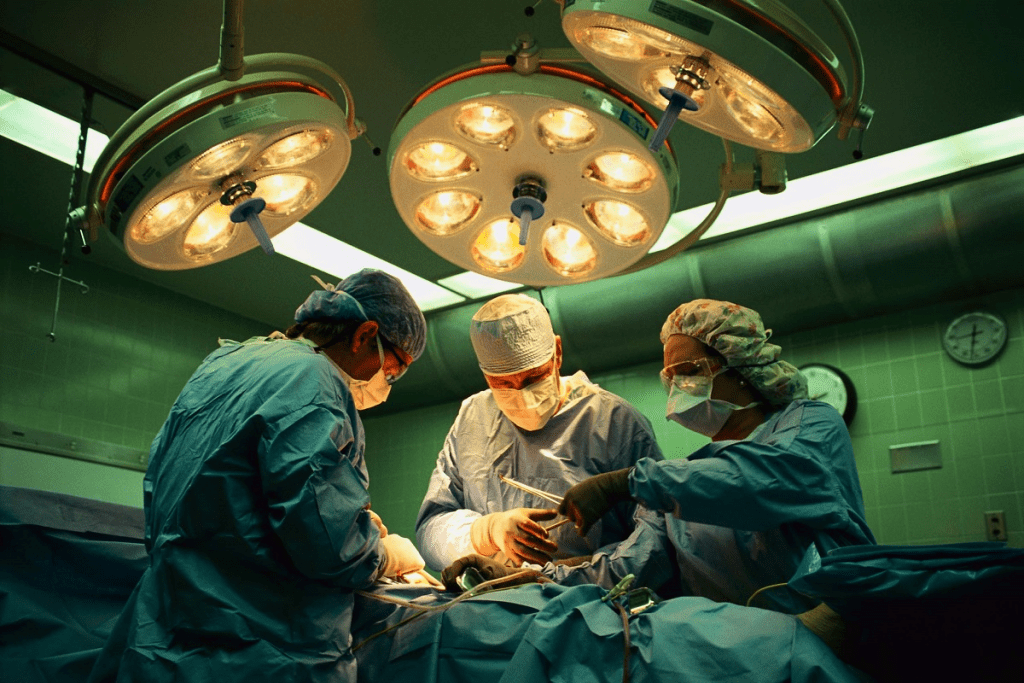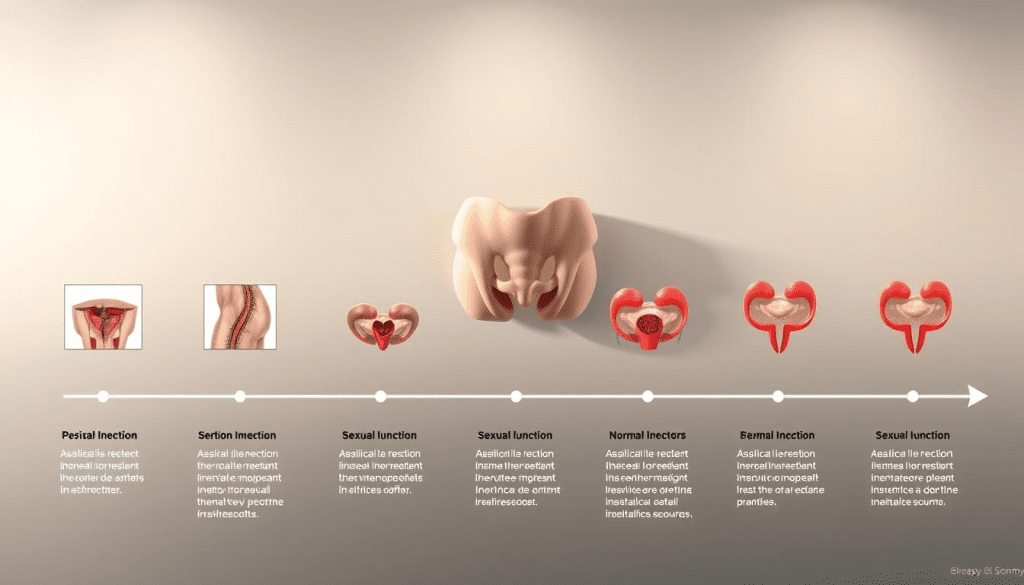Last Updated on October 31, 2025 by
Removing the prostate is a big deal. It’s a major surgery that needs general anesthesia and a hospital stay. At Liv Hospital, we know how important this is. We’re all about top-notch, innovative healthcare.

The prostate gland is key to a man’s reproductive system. Surgery to remove it is sometimes needed because of health issues. We’ll walk you through what happens, including the risks, recovery rates, and our expert care to help you get the best results.
Prostatectomy, or the removal of the prostate gland, has changed a lot with new medical tech. It’s mainly for treating prostate cancer. It can also help with severe BPH or other prostate problems.
The prostate gland is key in the male body. It makes seminal fluid, which helps and protects sperm. Knowing this helps understand why removing it might be needed.
Prostate removal is needed for many reasons, mainly because of prostate cancer. Taking out the prostate can treat cancer well, possibly curing it if it’s just in one place. For men with bad BPH, it can help with not being able to hold urine and needing to pee a lot.

Prostatectomy is done under general anesthesia, so the patient feels no pain. Before surgery, patients get checked out, stop some meds, and follow certain rules.
The time and how hard prostatectomy is can change based on the method. Robotic-assisted laparoscopic prostatectomy and traditional open radical prostatectomy are two main ways. The robotic method is usually less invasive and might mean a quicker recovery. The whole thing can take hours, and how complex it is depends on the patient’s health and the problem being treated.
Patients usually stay in the hospital for 1-2 days after surgery. Recovery times are 4 to 6 weeks for robotic surgery and up to 8 weeks for traditional surgery. Knowing this helps set the right expectations for the surgery and getting better.
There are different ways to remove the prostate, each suited for different patients. At places like Liv Hospital, they follow the latest medical standards. They focus on teamwork in healthcare.

This method uses a big cut in the belly to reach the prostate. It’s been around for a long time and works well. But, it might take longer to get better than newer methods.
Key aspects of traditional open radical prostatectomy include:
A famous urologist said, “Open radical prostatectomy has a long history of success. But, it’s important to think about the longer recovery time.”
“The choice of surgical technique depends on various factors, including the patient’s overall health and the stage of cancer,”
This shows how important it is to tailor treatment to each person.
This method is less invasive and uses a robotic system for better control. It offers more precision and flexibility during surgery.
The benefits of robotic-assisted laparoscopic prostatectomy include:
Surgeons can choose from several techniques, like robotic-assisted, open, or laparoscopic radical prostatectomy. The right choice depends on the case and the surgeon’s skill.
This method uses small cuts for laparoscopic tools to remove the prostate. It’s a less invasive option.
Key features of laparoscopic radical prostatectomy include:
In summary, the choice of prostate removal procedure depends on many factors. These include the patient’s health, cancer stage, and the surgeon’s advice. Each method has its own benefits and considerations. Talking to a healthcare provider is key to finding the best option.
After a prostatectomy, the first days are key for a smooth recovery. Knowing what to expect can make this time easier.
Patients usually stay in the hospital for 1 to 2 days after surgery. This lets doctors watch over them and handle any immediate issues.
A catheter is used for 1 to 2 weeks to drain urine. It’s a common step and is removed during a follow-up visit.
Pain control is very important after surgery. We start with IV pain meds and then give prescription pills. Our aim is to keep the patient’s pain under control.
At first, patients should avoid heavy activities. This means no heavy lifting, bending, or hard exercises. As they heal, they can slowly get back to normal activities with our guidance.
Important things to keep in mind during the first days include:
By understanding these points, patients can better handle their hospital stay and early recovery. This helps them have the best outcome after prostate surgery.
Knowing what to expect after prostate surgery is key for a smooth recovery. The time it takes to get back to normal can vary. This depends on the type of surgery you had.
Right after you go home, you’ll need to rest and avoid hard work. In the first week, it’s important to stick to your doctor’s instructions. This includes caring for your wound, taking your meds, and watching for any signs of trouble.
If you had robotic-assisted laparoscopic prostatectomy, your recovery might be faster. It usually takes 4 to 6 weeks. This is because the surgery is less invasive, leading to quicker healing.

On the other hand, traditional open radical prostatectomy takes longer. It can take up to 8 weeks to recover. This is because the surgery is more extensive, requiring more time for healing.
It’s okay to start doing things you normally do again slowly. How soon you can go back to work depends on your job and how fast you heal. Usually, people can get back to their usual life in 4 to 6 weeks after robotic surgery. For traditional surgery, it might take up to 8 weeks.
Always listen to your doctor’s advice. They can give you personalized guidance based on your situation and surgery details.
By understanding the recovery timeline and following your doctor’s advice, you can heal faster. This way, you can get back to your normal life sooner.
It’s important for patients to know about the side effects of prostate removal. This surgery, called prostatectomy, can affect a person’s health and life quality. We’ll talk about the common side effects and how they impact patients.
Urinary incontinence is a common issue right after surgery, affecting up to 77% of patients. But, most people get better over time. Over 90% of patients can control their bladder again within a year. This number drops to about 10% after a year.
Erectile dysfunction is another big side effect, affecting between 10-29% of patients. The impact can vary depending on the surgery method and the patient’s health before surgery.
There are other complications to watch out for:
While these issues can happen, the risk can be lowered with good surgery and care after surgery.
It’s important to know how prostate removal surgery affects life expectancy and quality of life. This surgery is often needed for prostate cancer or severe prostate enlargement. At Liv Hospital, we focus on teamwork and ethics to ensure great results and patient satisfaction.
Yes, living without a prostate is possible. Simple prostatectomy can greatly improve urinary symptoms from an enlarged prostate. Most people don’t need further treatment for Benign Prostatic Hyperplasia (BPH) after this surgery. But, making lifestyle changes and managing side effects is key.
Important things to think about include:
Prostatectomy can greatly improve survival rates for prostate cancer patients. Research on PubMed Central shows the surgery’s success thanks to better techniques and care.
Survival depends on several factors, including:
After prostatectomy, patients may face lifestyle changes. Managing urinary incontinence and erectile dysfunction is important. But, there are treatments and support to help regain quality of life.
Key lifestyle adjustments include:
Follow-up care is vital after prostatectomy. It helps monitor for cancer recurrence and manage side effects. Regular check-ups are key to early detection and support.
At Liv Hospital, we stress the importance of follow-up care. Our team ensures patients get the best care and support during recovery.
Understanding the surgery process, side effects, and recovery time is key. This knowledge helps patients make smart choices about their prostate surgery. We’ve looked at the different types of prostatectomy and how they affect life expectancy and quality.
It’s important for patients to talk to their surgical team about their preferences. This way, they can choose the best approach for them. This approach ensures the surgery meets their unique needs, leading to better results.
Making an informed choice about prostate surgery is vital. By using the information from this article, patients can confidently choose the right treatment. This ensures they get the best care for their situation.
The prostate gland helps the male reproductive system by making fluids that support sperm. It’s removed when prostate cancer is found or when other issues occur.
There are several prostate removal surgeries. These include traditional open radical prostatectomy, robotic-assisted laparoscopic prostatectomy, and laparoscopic radical prostatectomy. Each type is chosen based on the patient’s needs.
Recovery times vary. Robotic procedures take 4-6 weeks, while traditional surgery can take up to 8 weeks. It can take months to fully recover and return to normal activities.
Side effects include urinary incontinence and erectile dysfunction. Incontinence is common but improves over time. Erectile dysfunction can be a long-term issue. It’s important to discuss these with a healthcare provider.
Yes, living without a prostate is possible. Some lifestyle and sexual function adjustments may be needed. Many men lead active and fulfilling lives after surgery.
Hospital stay is usually 1-2 days after surgery. This depends on the procedure and individual recovery.
Survival rates after prostate removal are generally good if cancer is caught and treated early. Regular follow-up care is key to monitoring health.
Erectile dysfunction is a possible side effect, affecting 10-29% of patients. Its likelihood and severity depend on the surgery and the individual’s health.
Urinary incontinence is common at first but most men regain control over time. The chance of long-term incontinence varies, but most see improvement within a year
Subscribe to our e-newsletter to stay informed about the latest innovations in the world of health and exclusive offers!